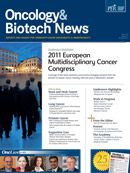Publication
Article
Oncology & Biotech News
Men Undergoing Prostate Biopsy Have Higher Hospitalization Rates
Author(s):
The rate of hospitalization in older men within 30 days of a prostate biopsy is more than double that occurring in a control population not undergoing a biopsy.

Stacy Loeb, MD
New data show that the rate of hospitalization in older men within 30 days of a prostate biopsy is more than double that occurring in a control population not undergoing a biopsy.
Stacy Loeb, MD, with Johns Hopkins Medicine in Baltimore, Maryland, and colleagues said that their findings challenge the popular belief that a prostate biopsy is a benign procedure. In fact, they estimated that if their results were replicated in a randomized trial, 1 additional hospitalization would occur within 30 days for each 24 biopsies performed.
In their study, the researchers compared 30-day hospitalization rates and ICD-9 primary diagnosis codes for admissions in 17,472 men who underwent 1 or more transrectal ultrasound-guided prostate biopsies and a random sample of 134,977 men during the same time frame who did not undergo a biopsy. Hospitalization rates were calculated by year from 1991 to 2007.
The study population included men who were aged ≥65 years in whom information was available from the Surveillance, Epidemiology and End Results (SEER)-Medicare-linked database. The SEER program supports population-based cancer registries in the United States.
While more than 1 million prostate biopsies are performed each year in Medicare recipients, the authors believe that their study is the first to examine the frequency of biopsy-related complications leading to hospitalization in Medicare patients.
After controlling for age, race, SEER region, year, and comorbidities, prostate cancer was associated with a 2.65-fold (95% CI, 2.47-2.84) increased risk of hospitalization within 30 days compared to the control population (P <.0001).
Hospital admission was largely due to the exacerbation of chronic conditions or new “issues,” such as infectious and noninfectious complications.
Even though men who had a prostate biopsy had more complications within 30 days of their procedure, they had lower 30-day mortality than controls after adjusting for demographic variables. Loeb and associates said that this finding probably occurred because of improved patient selection of healthier men for prostate biopsy. Nonetheless, men hospitalized with biopsy-related infections had a 12-fold higher risk of death compared with men without hospitalization for an infectious primary diagnosis overall.
Loeb and colleagues said that while the results may not apply to younger patients, they can be used to counsel older men planning a biopsy on the risk of complications. Individualized assessment of the risk-to-benefit ratio with this procedure is also important.
They cautioned that individual level covariate data were not available on the indications for biopsy, physician volume, number of biopsy cores, culture data, type of antimicrobial prophylaxis, and compliance with antimicrobial prophylaxis. Such information might have helped identify potential preventive strategies.
Loeb S, Carter HB, Berndt, et al. Complications after prostate biopsy: data from SEER-Medicare [published online ahead of print September 23, 2011]. J Urol. 2011;186(5):1830-1834.










